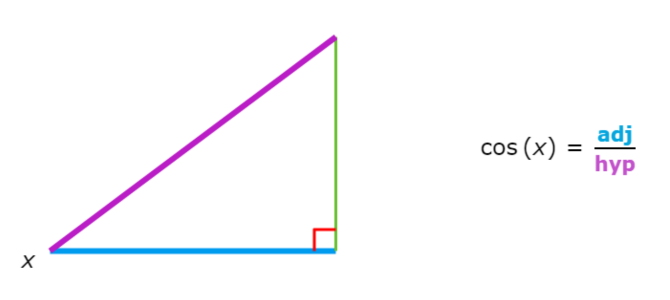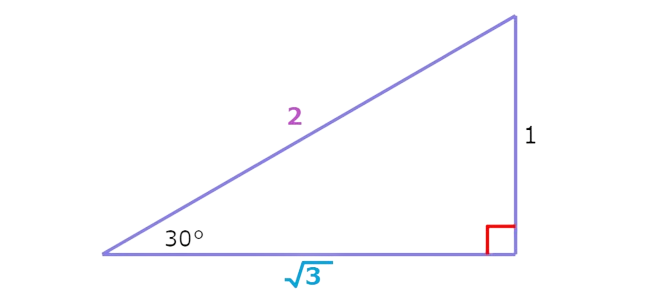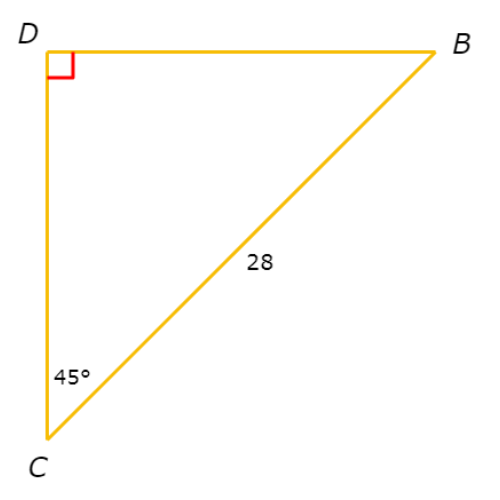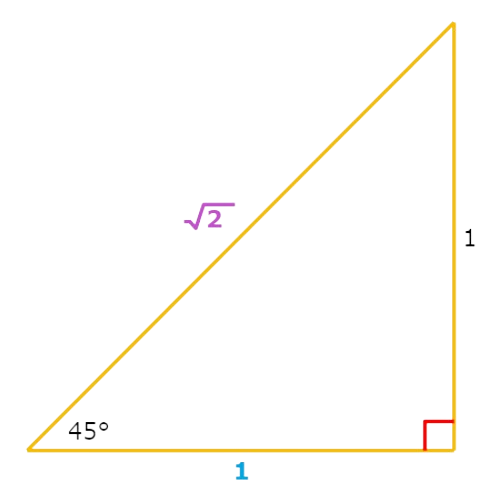Trigonometric ratios: find a side length
key notes :
The cosine (cos) of an angle in a right triangle is a ratio. It is the length of the adjacent leg (adj) divided by the length of the hypotenuse (hyp). The adjacent leg is the leg next to the specified angle and the hypotenuse is the side across from the right angle.

Learn with an example
Find UV.

Write your answer in simplified, rationalised form. Do not round.
UV =
Find cos30°.
To calculate cos30°, first draw the 30°-60°-90° special right triangle.

Calculate cos30°.
cos 30° = adj / hyp Definition of cosine
= √3/2 Plug in adj = √3 and hyp=2
So, cos30°= √3/2 .
Find UV.
Use the definition of cosine (cos) to write an equation, then solve for UV.
cos 30° = UV / 18√29 Given
√3/2 = UV / 18√29 Substitute cos30°= √3/2
18√29 . √3/2 = UV Multiply both sides by 18√29
9 √87 = UV Simplify
So, UV= 9 √87 .
Find CD.

Write your answer in simplified, rationalised form. Do not round.
CD =
Find cos45°.
To calculate cos45°, first draw the 45°-45°-90° special right triangle.

Calculate cos45°.
cos45° = adj / hyp Definition of cosine
= 1/√2 Plug in adj=1 and hyp= √2
= 1/√2 . √2/√2
= √2/2 Multiply
So, cos45°= √2/2
Find CD.
Use the definition of cosine (cos) to write an equation, then solve for CD.
cos45° = CD/28 Given
√2/2 = CD/28 Substitute cos45°= √2/2
28 . 2/2 = CD Multiply both sides by 28
14√2 = CD Simplify
So, CD=14√2 .
let’s practice!

